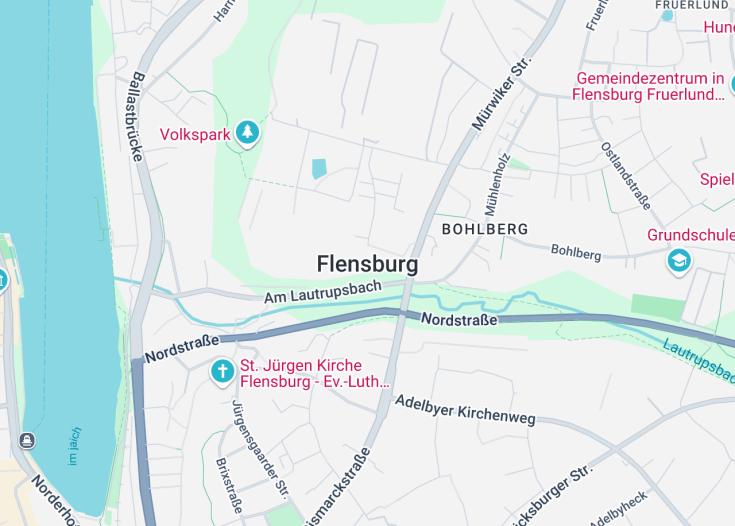Flensburg, a charming maritime city nestled at the tip of the Flensburg Fjord in northern Germany, is steeped in a rich history that dates back to the Danish-Westphalian period. Renowned for its well-preserved merchant’s courtyards and historic harbour, Flensburg offers a picturesque setting combined with a vibrant cultural life.
The city is also famous for its Rum trade heritage, reflected in the numerous old rum houses and museums. Visitors can explore maritime exhibitions, traditional boat-building, and dynamic cultural festivals that highlight the city’s North German and Danish influences.
When in Flensburg, take time to stroll down the Nordermarkt, which offers a blend of historical architecture and lively street-side cafes perfect for soaking in the local atmosphere.
A visit to Flensburg is incomplete without trying the Flensburger Pilsener. Delight in this local beer at a traditional brewery or a cozy pub along the historic sailors’ district.
Flensburg: Gateway to the Baltic
| Country | Germany |
| Time in Flensburg | GMT+1 |
| Language spoken | German |
| Population | 89,000 (City Data, 2023) |
| Currency | Euro (€ EUR) |
| Airports |
|
Nestled on the northern edge of Germany, Flensburg is a city steeped in maritime history and cultural richness. As a boundary city adjoining Denmark, it presents a unique blend of German and Danish heritage, mirroring its historical status as a member of the Hanseatic League. Today, Flensburg revels in its picturesque harbor, restored old town, and the vibrant student life fostered by the local university.
It is popular for its scenic views, sailing opportunities, and its traditional German beer culture celebrated through numerous breweries. The city also holds a significant role in the European market through its border trade, educational offerings, and cultural events that attract visitors and scholars alike.
Where is Flensburg?
Flensburg is located at the tip of the Flensburg Fjord in northern Germany, near the border with Denmark.
Distances:
| Route | Distance by car | Time by car |
| Flensburg to Hamburg | 99 miles | 1 hour 45 minutes |
| Flensburg to Copenhagen | 142 miles | 2 hours 30 minutes |
| Flensburg to Berlin | 225 miles | 4 hours 10 minutes |
| Flensburg to Kiel | 37 miles | 1 hour |
| Flensburg to Hanover | 186 miles | 3 hours 10 minutes |
What is Flensburg famous for?
Flensburg is renowned for its well-preserved architectural styles reflecting German and Scandinavian influences, and as a former member of the medieval Hanseatic League, it’s a beacon of maritime history.
History
Early Settlements to the Middle Ages (1st Century to 1400)
Flensburg’s historical narrative begins as a small Viking settlement established near the modern city’s location. As times progressed, the area saw the establishment of a marketplace which was instrumental in the town’s development. By the 12th century, it had become an important trading post due to its strategic position on the Flensburg Fjord. The town was officially recognized in 1284 when it was granted the Lubeck law, enhancing its status as a central trade hub in the Baltic region.
Renaissance to Industrial Age (1400 to 1800)
The period from the Renaissance through the Industrial Age marked significant growth for Flensburg. It joined the Hanseatic League in the 15th century, heightening its trading capacities extensively. The 16th and 17th centuries saw further flourish as Flensburg became known for its brewing and tobacco industries. Despite facing several hardships such as the Thirty Years’ War and the Great Northern War, the town managed to maintain its economic stability primarily through trade.
19th Century to World War II (1800 to 1945)
The 19th century brought about dramatic changes as Flensburg adjusted to life post the Danish rule, becoming part of Prussia in 1864 after the Second Schleswig War. Industrialization peaked with the emergence of the rum-distilling industry, which became a crucial economic pillar. World War II affected Flensburg like many German cities, with significant impact from air raids though some historical architecture survived.
Post-War Era to Present Day (1945 to Present)
Post-World War II Flensburg underwent reconstruction and saw a return to its trading legacy, bolstering economic growth. In recent decades, the city has developed a robust educational and cultural scene, accommodating a diverse population including many students and international residents. Modern-day Flensburg is known for its rich history, cultural diversity, and as a vibrant city with a high quality of life.
Visit Flensburg
What to see and do in Flensburg
Exploring Flensburg offers a blend of historical architecture and lively cultural scenes. Key attractions include:
- The Flensburg Harbor: Features historic ships and maritime museums.
- Nordermarkt: The historic marketplace bustling with cafes and shops.
- The Flensburg Fjord: Ideal for water sports and scenic walks.
- Museumsberg: Home to Flensburg’s history and art museums.
In addition to these sites, Flensburg’s old town area is perfect for walking tours that showcase its well-preserved merchant houses and cobblestone streets.
Festivals and Cultural Events
Flensburg is renowned for its vibrant cultural scene, especially notable during the ‘Flensburg Hofkultur,’ which takes place every summer offering a series of outdoor concerts and performances. In addition, the annual ‘Rum Regatta’ in May celebrates the city’s seafaring history with old sailing ships and maritime festivities.
Best time to visit Flensburg
The optimal time to visit Flensburg is from late spring to early autumn, specifically between May and September, when the weather is most conducive for exploring the outdoors and partaking in local events.
Is Flensburg worth visiting?
Flensburg is undoubtedly worth visiting for anyone interested in history, culture, and maritime adventures. Its rich heritage is reflected in the well-preserved old town and museums, while the harbor and fjord offer picturesque settings and leisure activities. Moreover, the city’s vibrant festivals and friendly locals make it an inviting destination for travelers.









